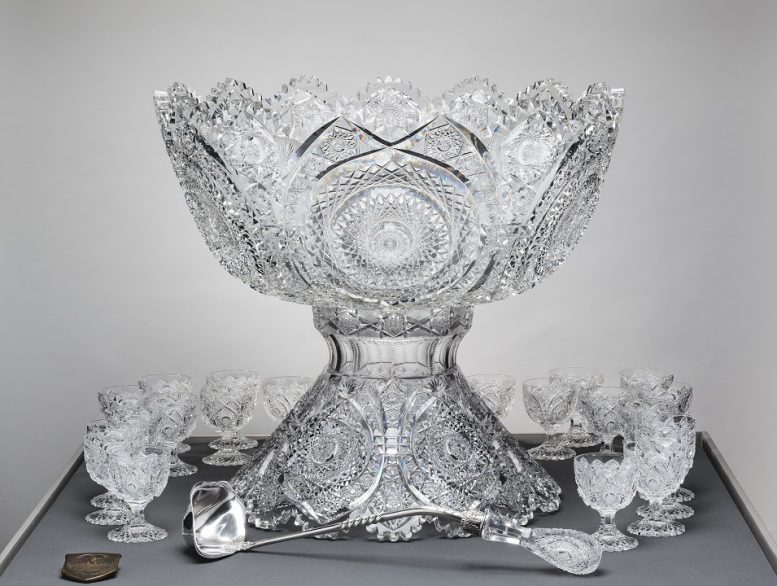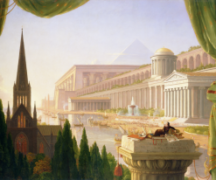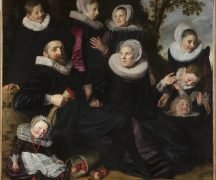From TOLEDO MUSEUM OF ART
To commemorate 200 years of excellence in glassmaking, the Toledo Museum of Art (TMA) has organized Celebrating Libbey Glass, 1818-2018. The exhibition will present more than 175 outstanding examples of glass from TMA’s renowned collection as well as objects and materials from the Libbey Inc. archives, including pressed glass tableware, Amberina art glass, Libbey’s world-renowned “brilliant” cut glass (including TMA’s glorious Libbey Punch Bowl), mid-century modern barware and examples of more recent “premium give-away” glasses for companies. Celebrating Libbey Glass will be on view exclusively at TMA beginning May 4 and continuing through Nov. 25 in the Glass Pavilion.
“As founders of the Toledo Museum of Art, the Libbey family was instrumental to the advancement of arts education and art appreciation in this region,” said Brian Kennedy, TMA’s Edward Drummond and Florence Scott Libbey director. “It is our honor to recognize the Libbey legacy of innovative glass design, practices and production and to celebrate the Museum’s longstanding commitment to the medium through collections development, exhibition, research and programming.”
The story of the Libbey Glass Company began 200 years ago in East Cambridge, Massachusetts. Established as the New England Glass Works in 1818, the company rose to prominence in the 19th century, cementing its reputation as one of the most successful American producers of fine glass tableware. As the general manager of the company from 1872, William L. Libbey (1823-1883) saw the business through difficult economic times, eventually taking over the firm’s lease to become owner. His son, Edward Drummond Libbey (1854-1925), joined his father as partner in 1880. Promoted to superintendent in 1883 at the age of 29 when his father died, the young Edward faced serious challenges with rising fuel costs and growing labor unrest. In 1888 he made the decision to move the entire operation to Toledo, Ohio, because of the abundance of natural gas and high-silica content sand, as well as its proximity to shipping and rail lines. Continuing its production of both high-end and everyday tableware, the factory thrived in Toledo and in 1892 officially changed its name to the Libbey Glass Company. Its success helped to brand Toledo as “The Glass City.”
Throughout its history, Libbey has created a great variety of decorative and useful blown and pressed objects in both colorless and richly colored glass, at times decorated with cutting and engraving. The firm won national and international fame through their extravagant displays at world’s fairs, especially the World’s Columbian Exposition in Chicago in 1893 and the Louisiana Purchase Exposition, St. Louis, in 1904. The company also made history by developing automated glass manufacturing processes. Its innovative and creative approach to glass has enabled Libbey to endure economic challenges and dramatic changes in taste and style.
Edward Libbey married Florence Scott, a Toledo native, and their personal fortune helped to establish the Toledo Museum of Art in 1901 and continues to sustain it through a generous endowment.
Celebrating Libbey Glass, 1818-2018 focuses on the tableware produced by the company since its inception. The glass works on view will be divided into three roughly chronological chapters of the firm’s history: “New England Glass Works, 1818-1888”; “Move to Toledo, 1888-1950”; and “Libbey Contemporary, 1930-present.” Each section will showcase a stunning array of glass objects, including table and floor lamps, vases, pitchers, goblets, decanters, paperweights, bowls and cocktail and champagne glasses. Libbey Glass Company’s luxury glassware exemplified excellence in age-old handcrafting practices of blowing and cutting glass, embodied in objects such as TMA’s extraordinary Libbey Punch Bowl, created for the St. Louis World’s Fair in 1903-04.
Celebrating Libbey Glass, 1818–2918 is supported in part by Libbey Inc. and the Ohio Arts Council. Admission to the exhibition is free.





